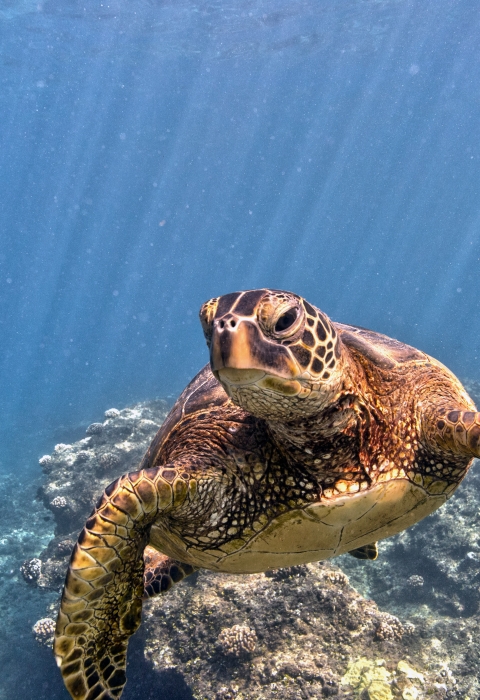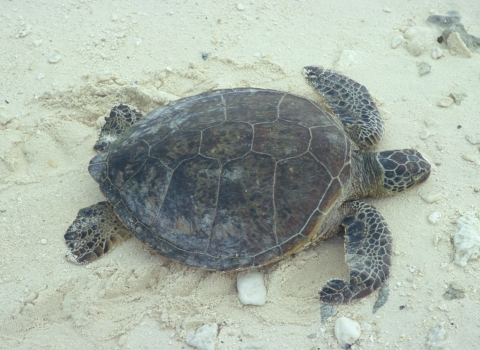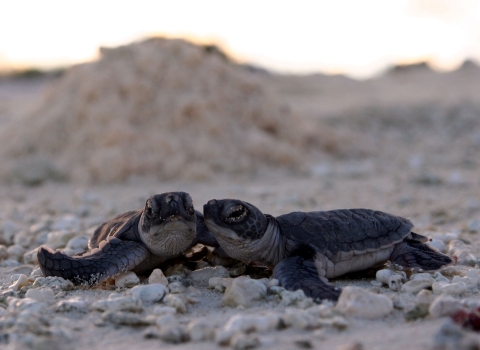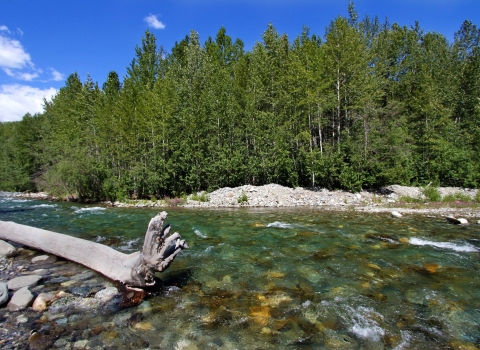Today, the U.S. Fish and Wildlife Service and NOAA’s National Marine Fisheries Service announced a proposal to designate new areas of critical habitat to protect threatened and endangered green sea turtles. The agencies share jurisdiction for sea turtles, with the Fish and Wildlife Service overseeing their protection and recovery on nesting beaches and NOAA Fisheries providing oversight in the marine environment.
The Fish and Wildlife Service and NOAA Fisheries listed the green sea turtle under the Endangered Species Act in 1978. Today’s announcement reflects a discrete update consistent with obligations under the ESA.
“Designating critical habitat for green sea turtles will help us effectively carry out our mission of protecting and recovering the species,” said Assistant Secretary for Fish and Wildlife and Parks Shannon Estenoz. “Endangered Species Act protections are benefiting the species by raising awareness about its threats, inspiring diverse partnerships on its behalf, and now helping conserve habitat critical to its conservation and recovery.”
The Fish and Wildlife Service proposes designating 8,870 acres (approximately 35.9 square kilometers) of critical habitat on land where green sea turtles bask, nest, incubate, hatch and travel to the sea. NOAA Fisheries proposes to designate marine critical habitat from the mean high water to 20 meters depth to protect access to nesting beaches, migratory corridors and important feeding and resting areas; it also includes Sargassum habitat in the Gulf of Mexico and Atlantic Ocean.
“Green sea turtles continue to face threats in the marine environment, including human interactions like bycatch and marine debris, as well as habitat loss and the ongoing impacts of climate change climate change
Climate change includes both global warming driven by human-induced emissions of greenhouse gases and the resulting large-scale shifts in weather patterns. Though there have been previous periods of climatic change, since the mid-20th century humans have had an unprecedented impact on Earth's climate system and caused change on a global scale.
Learn more about climate change ,” said NOAA Fisheries Assistant Administrator Janet Coit. “These new critical habitat proposals will aid in our joint mission to protect and recover endangered and threatened green sea turtles.”
The proposed critical habitat areas include the states of California, Florida, Hawaiʻi, North Carolina and Texas; the territories of American Samoa, Guam, and U.S. Virgin Islands; and the commonwealths of the Northern Mariana Islands and Puerto Rico. Details on the proposed critical habitat can be found in our Frequently Asked Questions.
Designating critical habitat under the ESA does not affect private landowners unless they implement an action involving federal funds, permits or other activities. It also does not affect land ownership or establish a refuge, wilderness reserve or preserve, or other conservation areas, nor does it allow the government or public to access private lands. It does not create a closed area, marine protected area marine protected area
Marine protected area (MPA) is a broad term for a refuge, park or other protected area that includes some marine or Great Lakes area. An MPA is defined under Executive Order 13158 as any area of the marine environment that has been reserved by federal, state, territorial, tribal or local laws or regulations to provide lasting protection for part or all of the natural and cultural resources therein. U.S. marine protected areas work together at regional and national levels to achieve common objectives for conserving the nation’s important natural and cultural marine resources. However, each MPA is managed through the authorities under which it was established.
Learn more about marine protected area , refuge, wilderness reserve, preservation, or other conservation area conservation area
A conservation area or wildlife management area is a type of national wildlife refuge that consists primarily or entirely of conservation easements on private lands. These conservation easements support private landowner efforts to protect important habitat for fish and wildlife. There are 13 conservation areas and nine wildlife management areas in the National Wildlife Refuge System.
Learn more about conservation area .
A final rule listing 11 distinct population segments of green sea turtles was issued in 2016 (three endangered DPSs and eight threatened DPSs). The 2016 rule did not include the proposed critical habitat as it was deemed not determinable at that time. Once critical habitat is designated, federal agencies must consult with the Fish and Wildlife Service or NOAA Fisheries to ensure actions they fund, authorize or undertake will not destroy or adversely modify the critical habitat. Much of the proposed critical habitat for the green sea turtle overlaps with existing critical habitat for other species. Please visit the Fish and Wildlife Service’s online mapping tool and NOAA Fisheries’ online mapping tool for more information on those overlapping areas and species.
Historically, green sea turtles were killed for their meat and eggs, leading to global population declines. Today, the species faces an array of risks, including threats to its habitat. Coastal development impacts the beaches they require to nest and increases artificial lighting, causing hatchlings to migrate to the lights and away from the ocean. Runoff and other pollution kill seagrass and algae, reducing the availability of this major food source for green sea turtles. Fisheries bycatch, vessel strikes, marine debris and pollutants also continue to threaten green sea turtles.
Climate change also imperils green sea turtles as rising seas and storms erode beaches and flood nests, causing them to wash away. Higher sand temperatures can increase the number of female hatchlings, shifting the ratio of males and females. Changes in ocean temperature alter the amount and distribution of food, upsetting their migration, foraging range and nesting seasons.
Today’s announcement comes as the ESA turns 50 this year. Throughout the year, the ESA is being celebrated for its importance in preventing imperiled species’ extinction, promoting the recovery of wildlife, and conserving the habitats upon which they depend.
The Fish and Wildlife Service and NOAA Fisheries will conduct virtual and in-person informational meetings and public hearings on the proposed critical habitat. Registration is only required for virtual meetings and hearings. Learn more at these websites:
Meetings covering habitat in the Atlantic and Pacific: https://www.fws.gov/library/collections/green-sea-turtle-meetings-hearings
Virtual meeting covering habitat in Southern California: https://www.fisheries.noaa.gov/action/critical-habitat-green-sea-turtles
Comments on the proposed rules must be submitted by Oct. 17, 2023. Submit comments at www.regulations.gov under docket number FWS-R4-ES-2022-0164 for the proposed terrestrial critical habitat; docket number NOAA-NMFS-2023-0087 for the proposed marine critical habitat.
Visit the Fish and Wildlife Service and NOAA Fisheries websites for more information about green sea turtles.



